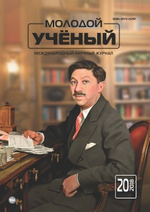As we know there are four steps of the writing process, they are: prewriting, writing, revising, and proofreading. This article is devoted to the essential ways and steps of writing process and their advantages during writing. The first is pre-writing process and it is the learner’s attempt. [1]
Pre-Writing — Whatever type of writing a student is attempting, the prewriting stage can be the most important. This is when students gather their information, and begin to organize it into a cohesive unit. This process can include reading, taking notes, brainstorming, and categorizing information.
Prewriting is the most creative step and most students develop a preferred way to organize their thoughts. Stream of consciousness writing, graphic organizers, outlines, or note cards are popular techniques. Often this stage is best taught by a parent modeling the different methods, perhaps a different one each week until the student finds which one works best for him.
Writing -The actual writing stage is essentially just an extension of the prewriting process. The student transfers the information they have gathered and organized into a traditional format. This may take the shape of a simple paragraph, a one-page essay, or a multi-page report. Up until this stage, they may not be exactly certain which direction their ideas will go, but this stage allows them to settle on the course the paper will take.
Teaching about writing can sometimes be as simple as evaluation good literature together, and exploring what makes the piece enjoyable or effective. It also involves helping a student choose topics for writing based on their personal interests. Modeling the writing process in front of your child also helps them see that even adults struggle for words and have to work at putting ideas together.
Revising, or editing is usually the least favorite stage of the writing process, especially for beginning writers. Critiquing one’s own writing can easily create tension and frustration. But as you support your young writers, remind them that even the most celebrated authors spend the majority of their time on this stage of the writing process. Revising can include adding, deleting, rearranging and substituting words, sentences, and even entire paragraphs to make their writing more accurately represent their ideas. It is often not a one-time event, but a continual process as the paper progresses.
When teaching revision, be sure to allow your child time to voice aloud the problems they see in their writing. This may be very difficult for some children, especially sensitive ones, so allow them to start with something small, such as replacing some passive verbs in their paper with more active ones.
Proofreading — This is a chance for the writer to scan his or her paper for mistakes in grammar, punctuation, and spelling. Although it can be tempting for parents to perform this stage of the writing process for the child, it is important that they gain proofreading skills for themselves as this improves a student’s writing over time. And because children want their writing to be effective, this can actually be the most opportune to teach some of the standard rules of grammar and punctuation. [2]
When students learn the rules of mechanics during the writing process they are much more likely to remember to use them in the future.
Creative writing normally refers to the production of texts which have an aesthetic rather than a purely informative, instrumental or pragmatic purpose. Most often, such texts take the form of poems or stories, though they are not confined to these genres. (Letters, journal entries, blogs, essays, travelogues, etc. can also be more or less creative.) In fact, the line between creative writing and expository writing is not carved in stone. In general, however creative writing texts draw more heavily on intuition, close observation, imagination, and personal memories than expository texts.
One of the chief distinguishing characteristics of creative writing texts is a playful engagement with language, stretching and testing its rules to the limit in a guilt-free atmosphere, where risk is encouraged. On the contrary, creative writing requires a willing submission on the part of the writer to the ‘rules’ of the sub-genre being undertaken. If you want to write a Limerick, then you have to follow the rules governing limericks. If not, what you produce will be something other than a limerick: obvious, perhaps, but important too.
Creative writing aids language development at all levels: grammar, vocabulary, phonology and discourse. It requires learners to manipulate the language in interesting and demanding ways in attempting to express uniquely personal meanings. In doing so, they necessarily engage with the language at a deeper level of processing than with most expository texts.
Finally, creative writing feeds into more creative reading. It is as if, by getting inside the process of creating the texts, learners come to understand intuitively how such texts function, and this makes similar texts easier to read. Likewise, the development of aesthetic reading skills provides the learner with a better understanding of textual construction, and this feeds into their writing.
Creative writing is one way of keeping teachers’ English fresh and vibrant. For much of our professional lives we are in thrall to the controlled language of textbook English and the repeated low level error-laden English of our students. As teachers of language, we surely have a responsibility to keep our primary resource alive and well. [3]
References:
- Craik and Lockhart ‘Levels of processing: a framework for memory research’ Journal of Verbal Learning and Verbal Behaviour. 11. 1972
- Ron White and Valerie Arndt. “Process Writing”. Cambridge Press. 2006.
- Tan, Bee Tin (ed).Creative writing in EFL/ESL Classrooms I. Serdang: UPM Press. 2004







